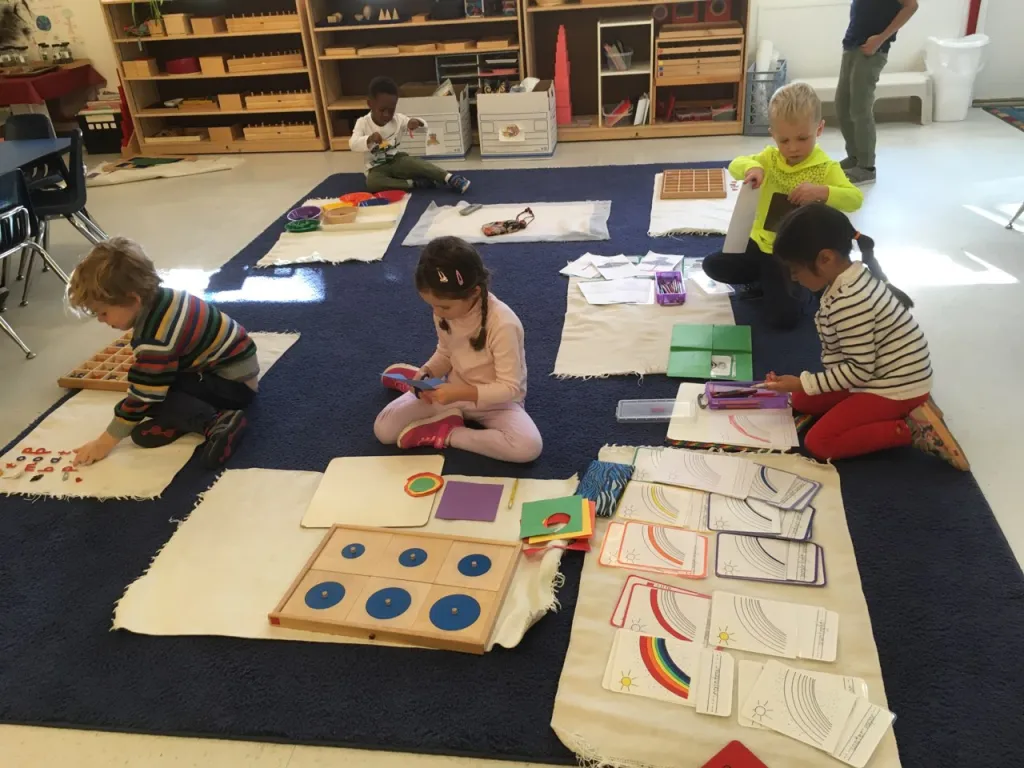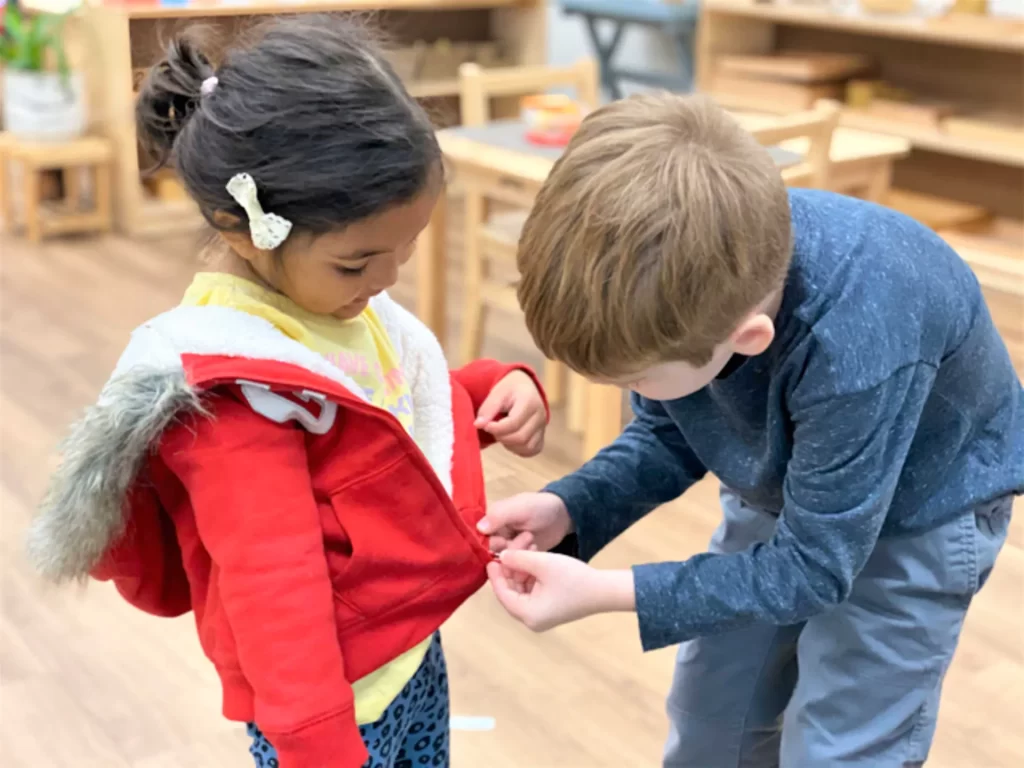The Montessori Method can be applied to children from birth to 18 years. Dr. Montessori noticed distinct differences /similarities in the way children learn and understand concepts, and their behaviour patterns at different stages in their lives. These she called “Stages of Development, which she then divided into groups of 3s. namely,
0-3yrs; 3-6yrs; 6-9yrs …and so on.
So, that is the reason you can comfortably place all children in the same stage of development together, in the same classroom.

Let us understand that the Montessori Method is not some armchair philosophy. It was a painstaking, deliberate method put together by Dr. Maria Montessori through her observations of children from different strata of society, from different countries – all because of her faith, concern and respect for the “Child.” The basic characteristic of the Human Child has not changed in 100 years and so the method still works beautifully for all children of the world.
So, This is what we call Vertical Grouping in Montessori terms.
How does it work to put three age group children in one class – Let us look at the advantages of Vertical grouping
Advantages of Vertical Grouping
You will have noticed that your second child, learns concepts faster than your firstborn child, because he now has an additional teacher in the family in the form of an older sibling.
This is exactly what happens in a Montessori classroom with Vertical Grouping.
1. Children are catered to individually depending on their needs and levels of understanding. The older children mostly, two thirds of the group know how to work independently. The younger ones mostly learn by watching and imitating the older ones. This really gives enough time to the teacher to plan who she needs to give her attention to. Many a times the older children teach the younger ones, which not only helps strengthen their own concepts, but inculcates a sense of responsibility, sharing, caring towards the little ones. Such beautiful qualities at such a young age!
2. On the other hand, let us take the example of twins. The mother would need an additional hand to help her out because both children having the same needs. But, if you have say five children of different ages, the mother is not that hassled, as the older ones look after the younger ones. That is how it works with vertical grouping.

3. The discipline levels with the vertical grouping are amazing. The younger ones learn to behave themselves, learn the culture of the classroom faster by just observing the older children. The older children are more than happy to help their younger classmates whenever required. Even if the teacher needs to step out of the classroom, her absence is hardly noticed. When new children join a classroom, they settle down very fast. It is quite embarrassing, isn’t it when you are crying for your mommy while the rest of the children are busy with their work.

4. The children remain together in the same group for three years with the same teacher. There is an amazing bond and a sense of belonging that develops during this period, instead of jumping class and changing teachers each year for such little ones.
5. Good News for Entrepreneurs wanting to start a school. Initially when you do not have enough children in each class to begin with, the vertical grouping turns out to be extremely economical with just 1-2 teachers required to manage the three age-groups.